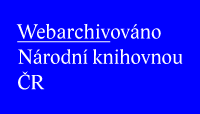Databáze českého amatérského divadla
Texty: Publikace, Malované opony divadel českých zemí, 2010 / žx Resumé, angl. s. 401
RESUMÉ
The publication "The Painted Czech Theatres Curtains" published the National and
Information Centre for Local Culture in Prague in 2010 as a part of a project "The
Conservation and Presentation of Cultural Heritage of Czech and World Theatre / The
Czech Amateur Theatre Database" supported by Financial Mechanisms EEA/Norway.
The book is first comprehensive witness of one aspect of the rich cultural life in cities and
villages in XIXth and in the 1st half of XXth centuries. The painted theatre curtains are one
of the physical preserved evidence of that life - not only in castle environment and in theatre
buildings in bigger cities but also in pub halls, in travelling puppeteers' equipment
or as a part of small family theatres.
We managed - maybe at the eleventh hour - with the help of broad scope of collaborators
to collect the extensive picture documentary material that give us the evidence about
forms of curtains, depicted motives but also information and documents about circumstances
at the time of their origins and about the authors. We accompanied particular
images of curtains with comments and confessions not only of professional but also of
local informants with quotations from published materials. The chapters are introduced
with studies by theatre experts and historians. Their views on the phenomenon of the
painted theatre curtains are many times first ones on this topic.
The publication is introduced by the editor's comment "The Path to the Treasure" (p. 7)
that reveals the situation around this publication's birth and informs about its preparation
and organization. The serious reflection about the curtain's role is the introductory passage
with the modest name "The Curtain Generally" (pp. 9 – 16). The quotation of an
encyclopaedic entry "On the Curtain History" (p. 17) classifies the publication into context
of the world development of the curtain's role in the theatre.
After these introductory chapters the richness of till now registered painted curtains is
organized into chapters followed their specific with respect to their usage or their iconography.
"The Curtains in Castle Theatres" (pp. 19 – 29), "The Curtains with Allegoric Scenes" (pp.
30 – 51) and "Muses" (pp. 52 – 71) are arranged chronologically.
The curtains in the chapter "Czech History Fables"(pp. 72 – 159) are arranged chronologically
according to their themes and they are accompanied by comments on the interpretation
of the Czech history. The curtains with motifs of "Patriotism and Flag-waving"
(pp. 160 – 191) are incorporated into next chapter.
The curtains depicting the natural surroundings of home, city or village and the life in
them are topics of chapters: "The Landscape" (pp. 192 – 215), "Village views" (pp. 216 –
265), "The village's life" (pp. 266 – 279) and "Pictures of home" (pp. 280 – 312).
The curtain starts often to constitute a part of the stage design, especially on professional
stages during the XXth century (pp. 313 – 323). In the same places the searching of the
contemporary form of curtains takes place (pp. 324 – 333). "The Artistic Arrangement of
Iron Curtains" (pp. 334 – 340) separates the previous text from the curtains from the other
theatrical world, where the puppets and hand puppets perform instead of living actors.
The curtains of puppet theatre are treated in three chapters: "The Curtains of Standing
Puppet Theatre Scenes" (pp. 341 – 351), "The Curtains of Travelling Puppeteers' Families"
(pp. 352 – 369) and "Printed Curtains for Family Puppet Theatres" (pp. 370 – 387), that
achieved the big popularity in Czech countries mainly in the first half of the XXth century.
The closing part of the book witnesses the documented curtains that had been destroyed
in the course of time, that had been lost or they are missing by various reasons (pp. 388
– 400).
The book records different approaches of the society to that specific part of the culture
heritage as well. From the nationwide respect and care for, from the conscious local relationship
to the historical and artistic value through the indifference up to the uninteresting
in the fate of the curtain. Realizers of the collection met problematic consequences of
legal transfers of historical buildings into private sector and with insensitive pecuniary
use of them, with total lack of interest in their decay in the ruins of stores and in devastated
objects. We regret to state that roughly one third of documented curtains is destroyed
or lost or stolen nowadays.
The publishers hope that this publication becomes an impulse to new valuable discoveries
and that it strengthens the local governments' resolve to preserve and present this up
to now undervalued and maybe undiscovered culture heritage of last centuries.
We present this collected material to the public being aware of the fact that the process
of discovering and filling-in information about curtains has not been closed. The publishers
ask readers to send us any appropriate information to: divadlo.baze@nipos-mk.cz.
Máte nějaké další informace k tomuto tématu?
Pokud se s námi chcete o ně podělit, zašlete nám je prosím prostřednictvím následujícího formuláře. Formulář slouží pro zasílání faktografických informací pracovníkům databáze.
Prosíme, neposílejte vzkazy určené souborům či jednotlivým osobám, nebudou jim doručeny. Neposkytujeme jiné než zveřejněné kontaktní informace. Pokud chcete kontaktovat jednotlivé soubory či organizace, využijte prosím jejich webové stránky.




